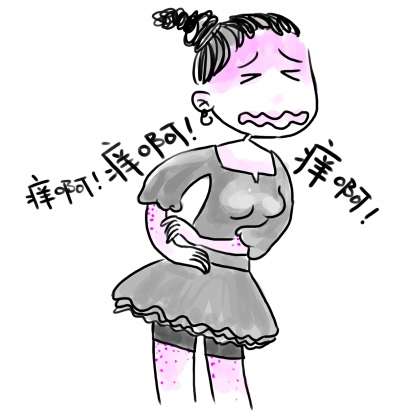(单词翻译:单击)
听力文本
This is Scientific American — 60-Second Science. I'm Christopher Intagliata.
Your skin—like many other parts of your body—is crawling with microscopic critters. "It's a microbial zoo in a sense." Heidi Kong, a dermatology researcher at the National Institutes of Health.
That microbial zoo—and the types of microbes in it—changes over time. Kong and her team observed those changes during a flare-up of eczema—a condition characterized by itchy, inflamed skin. On healthy skin, and on patients with mild eczema, the researchers found a diverse roster of bacterial residents—including a species of Staph bacteria called Staphylococcus epidermidis. But in patients suffering a severe bout of eczema, that diversity was disrupted. And strains of a different Staph species dominated: Staphylococcus aureus.

The research team then collected Staph aureus strains from the eczema sufferers and swabbed them on the skin of mice. And that once-healthy mouse skin grew thicker—as it does in eczema—and was invaded by immune-response cells. While not proof, the result suggests that certain strains of Staph bacteria could be culpable in worsening eczema flares. The study is in the journal Science Translational Medicine.
The genetic technique Kong and her team used—called shotgun metagenomics—gives a detailed snapshot of the microbiome. So it might be used to investigate other skin conditions too.
"For example, acne has been linked with Propionibacterium acne. There's interest in looking at other inflammatory skin diseases, such as rosacea or even psoriasis. So there is the potential to use shotgun metagenomics to study inflammatory skin diseases and even skin cancers, to better understand: what are the microbes that might be there, and what they may be doing."
And whether certain members of that microbial menagerie might be mistreating the zookeeper.
Thanks for listening for Scientific American — 60-Second Science Science. I'm Christopher Intagliata.
参考译文
这里是科学美国人——60秒科学。我是克里斯托弗·因塔利亚塔。
同身体其他部位一样,你的皮肤上也爬满了微小的生物。“从某种意义上来说,皮肤就像一个微生物动物园。”美国国立卫生研究院的皮肤学研究员海蒂·孔说道。
这一微生物动物园及其内部的微生物种类会随着时间发生变化。孔和她的团队观察了湿疹爆发过程中这些微生物所发生的变化,湿疹的特征是皮肤瘙痒、红肿发炎。在健康的皮肤上和有轻微湿疹的患者身上,研究人员发现了多种细菌,其中有一种属于葡萄球菌的细菌——“表皮葡萄球菌”。但在患有严重湿疹的患者皮肤上,这种细菌的多样性遭到了破坏。另一种葡萄球菌属的菌株占了主导地位,这就是金黄色葡萄球菌。
研究团队随后从湿疹患者皮肤上采集了金黄色葡萄球菌菌株,并用棉签将其涂抹在小白鼠的皮肤上。曾经健康的小白鼠皮肤渐渐变厚,就像患了湿疹一样,而且免疫反应细胞也进入了皮肤。虽然没有证据,但是结果表明,某些葡萄球菌的菌株可能会导致湿疹恶化。这项研究结果发表在《科学·转化医学》期刊上。
孔和她的团队所使用的基因技术名为“猎枪宏基因组”,它为微生物提供包括详细信息的快照。因此,它也有可能被用来研究其它皮肤病。
“例如,痤疮已经与痤疮丙酸杆菌联系在了一起。科学家还有兴趣观察其他炎症性皮肤病,如酒渣鼻(红斑痤疮)或牛皮癣。因此,猎枪宏基因组可能被用来研究炎症性皮肤疾病甚至皮肤癌,它能让科学家更好地了解:哪些微生物可能存在于病变皮肤中,它们可能会起到何种作用。”
而且,它还能帮助我们了解微生物动物园中的某些成员是否在虐待它们的“管理员”。
谢谢大家收听科学美国人——60秒科学。我是克里斯托弗·因塔利亚塔。
译文为可可英语翻译,未经授权请勿转载!
重点讲解
重点讲解:
1. in a sense 从某种意义上说;
例句:In a sense, the accent has been considered as an individual symbol.
在某种意义上,口音甚至成为了一种个性的符号。
2. for example 例如;比如;
例句:For example, studies have been done on windbreaks in parts of West Africa.
例如,研究小组已经完成对西非部分地区防风林的研究。
3. look at 考虑;研究;
例句:We have set up a task force to look at the question of women returning to work.
我们已经成立了一个工作组去调查妇女复工的问题。
4. such as (用于举例)例如,像,诸如;
例句:Trees such as spruce, pine and oak have been planted.
种植了云杉、松树和橡树等树木。


